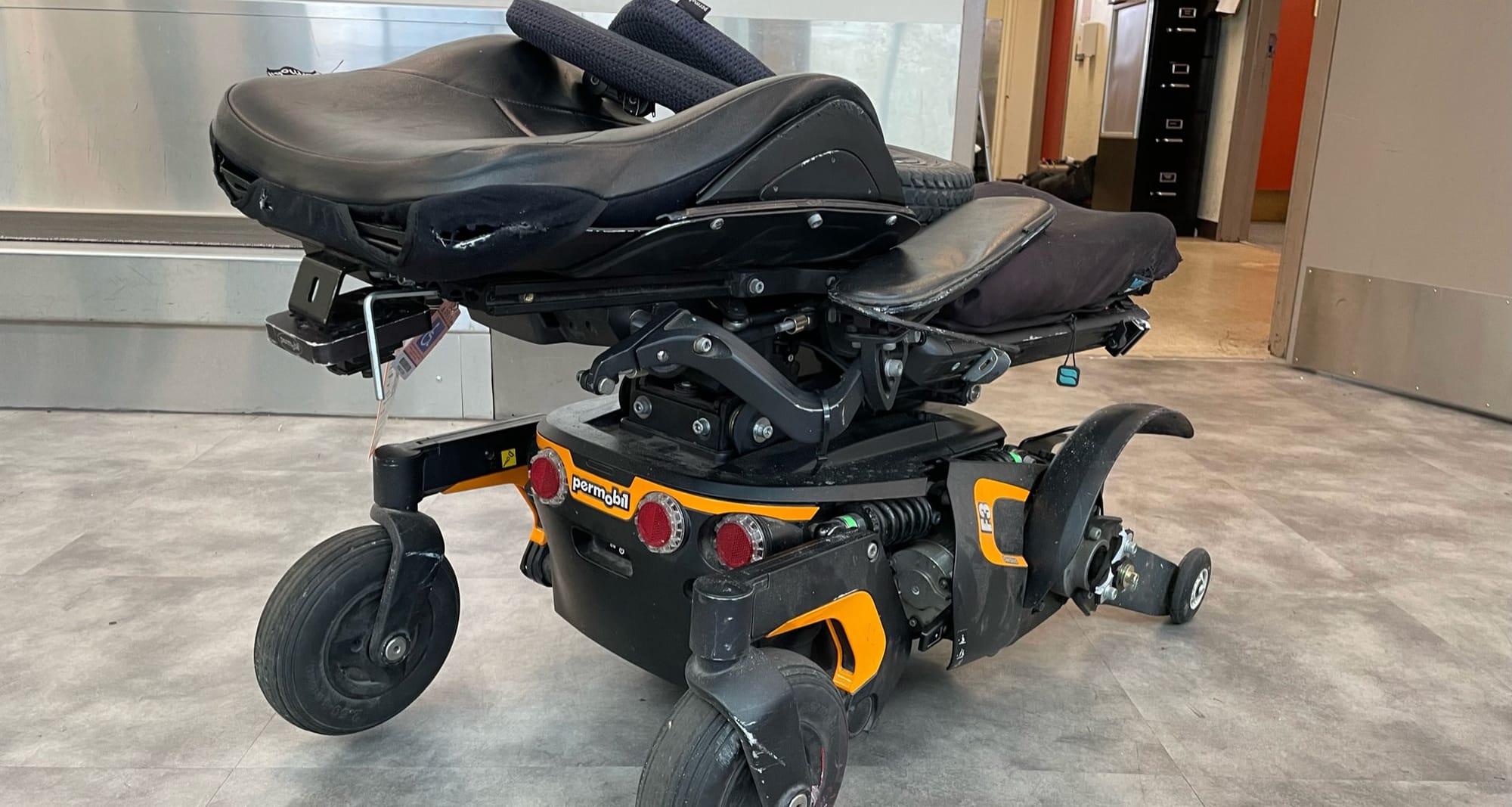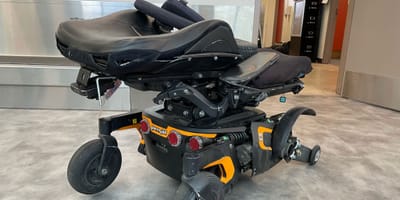Although statistics from the Department of Transportation point to wheelchair damage occurring on roughly 1.5% of flights, minor damage often goes unreported. Through my own experience over nearly 1,000 flights, my power wheelchair has been damaged on one-third to one-half of those flights, with most damage being too minor to waste time reporting. Significant damage that results in the chair becoming inoperable is much rarer, with a frequency of less half a percent, or at a rate of about 1 in 200 flights.
Understanding why airlines are damaging so many wheelchairs is key to developing solutions to prevent it — in this article, I’ll explore the top four causes of airline wheelchair damage.
Wheelchairs are physically lifted (and often dropped) by airline personnel
More often than not, airline personnel physically lift wheelchairs — including 400-pound power wheelchairs like mine — onto the belt loader. While new tools have been developed to eliminate the need for this, not all carriers and airports have invested in that equipment.
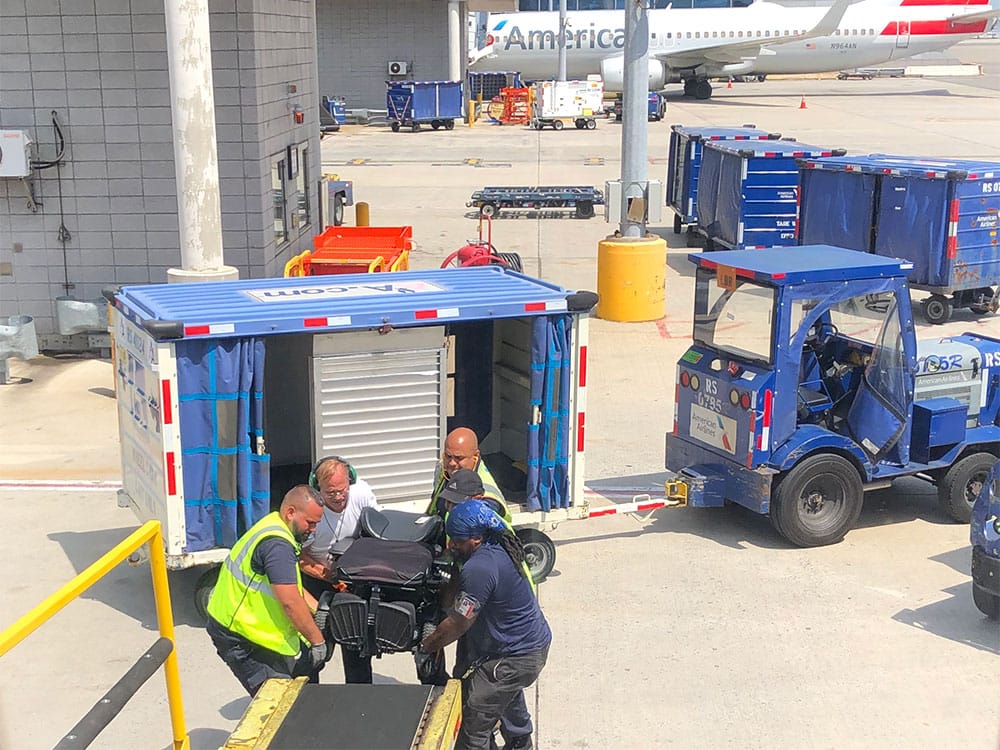
Even where those tools do exist, ramp crews may lift chairs anyway because doing so is faster. In the photo above, I caught four American Airlines ramp agents at New York’s JFK Airport lifting my power wheelchair despite a ramped baggage cart meant for barrier-free wheelchair loading situated only feet away. I dived deeper into American’s mistreatment of mobility device in the article Everything You Need to Know About Wheelchair Handling at American Airlines in One Photo — it’s an interesting read.
When staff lift wheelchairs, they’re prone to damaging them in the process. Here are a few things that can happen:
- Staff grip onto parts of the wheelchair that are not weight-bearing, such as anti-tip wheels, headlights, armrests, footplates, and lowered backrests.
- Wheelchairs may be dropped, or set down with force, either from a height of a few inches or, regrettably, feet.
- Lightweight manual wheelchairs may be treated in an indelicate manner, tossed or thrown.
Like other wheeled devices (cars, motorcycles, etc.), wheelchairs are designed to bear weight on their wheels — just as I wouldn’t drive my wheelchair straight off a curb or jump, the tires of a wheelchair should never leave the surface of the ground, ramp or platform. Complex rehab power wheelchairs that weigh hundreds of pounds are not designed to be carried!
Wheelchairs are not properly secured in the aircraft cargo hold
Wheelchairs are stored in the airplane cargo hold and, like the fixtures in the aircraft cabin, they need to be secured to the aircraft structure. Takeoffs, landings and inflight turbulence are not gentle, and the items in the cargo hold shift about in response to the forces exerted on and by the aircraft.
Frequently, in the interest of getting flights out on time, ground crew fail to secure the wheelchair using ropes, straps and securement hooks that are meant for this purpose. As a result, wheelchairs may bounce, shift or tip over during flight and, in the case of a hard landing, a wheelchair may slam against the cargo compartment’s walls. This can lead to significant damage.
On a recent American Airlines flight to Washington, D.C., my wheelchair was returned with significant damage that will likely lead to it being written off as a total loss. Staff who offloaded the wheelchair informed me that the wheelchair had not been tied down — this lack of securement left it vulnerable during takeoff and landing, which is when the damage likely occurred.
Wheelchairs do not fit upright in the cargo hold and are loaded on their side
For power wheelchair users planning to fly on an airplane, the most important article on this website lists the dimensions of airplane cargo holds. Airplane cargo compartments are smaller than you might think and many are too small to accommodate large power wheelchairs in an upright position. The world’s most popular commercial passenger aircraft, the Boeing 737, has just 33 inches of clearance at the cargo door.

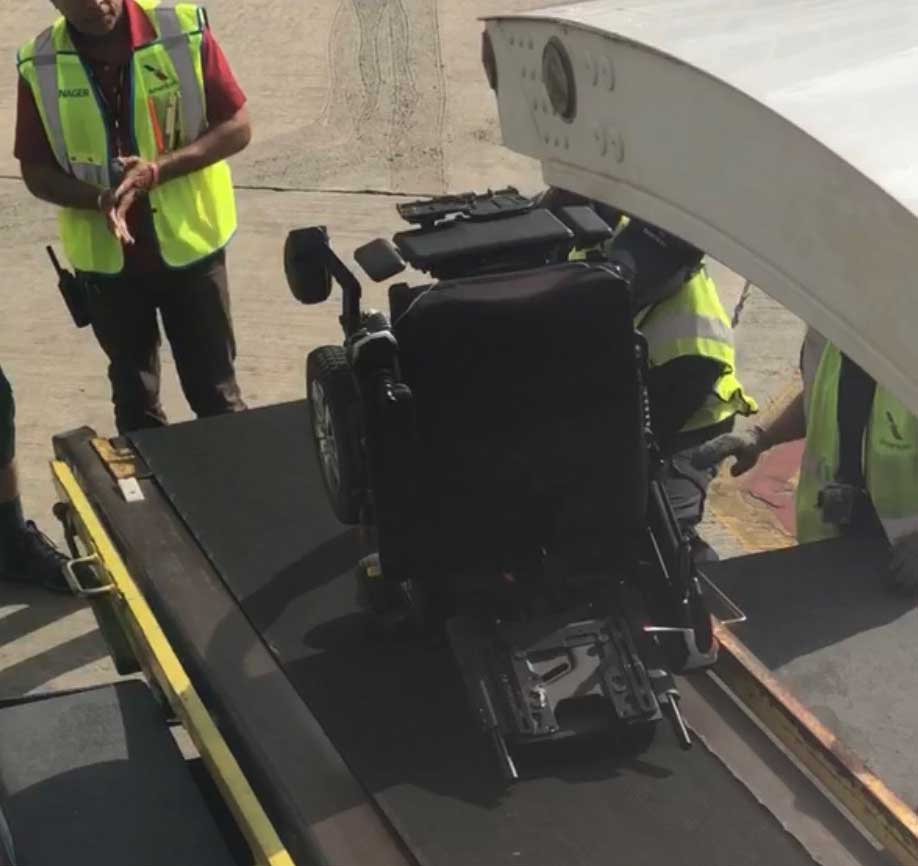
When a wheelchair is presented that won’t fit upright through the cargo door, it is turned on its side for loading — this was the case with the first wheelchair pictured above. That wheelchair was a loaner wheelchair that I was using after my own had been damaged.
The second photo above, however, was my own personal wheelchair — it did fit upright into the cargo hold, but airline staff oddly tipped it backwards during loading, damaging it in the process. To prevent this from happening in the future, I created the Wheelchair Must Be Loaded Upright tag, and that hasn’t happened since. You can buy one of your own in the Wheelchair Travel Shop.
Even with the tag, your wheelchair must fit upright into the cargo hold in order to be loaded as such. On aircraft with smaller cargo holds, I accomplish this by reclining the backrest on my power wheelchair and lowering the armrests. If your wheelchair is too tall, talk with your wheelchair manufacturer or local sales office to figure out a method for reducing its total height.
Wheelchairs are left exposed to adverse weather, such as rain and snow
Rain, sleet, and snow can all have damaging effects on mobility devices — from soaking seat cushions to corroding or infiltrating electronic components such as joysticks, headlights, charging ports and hydraulic mechanisms.
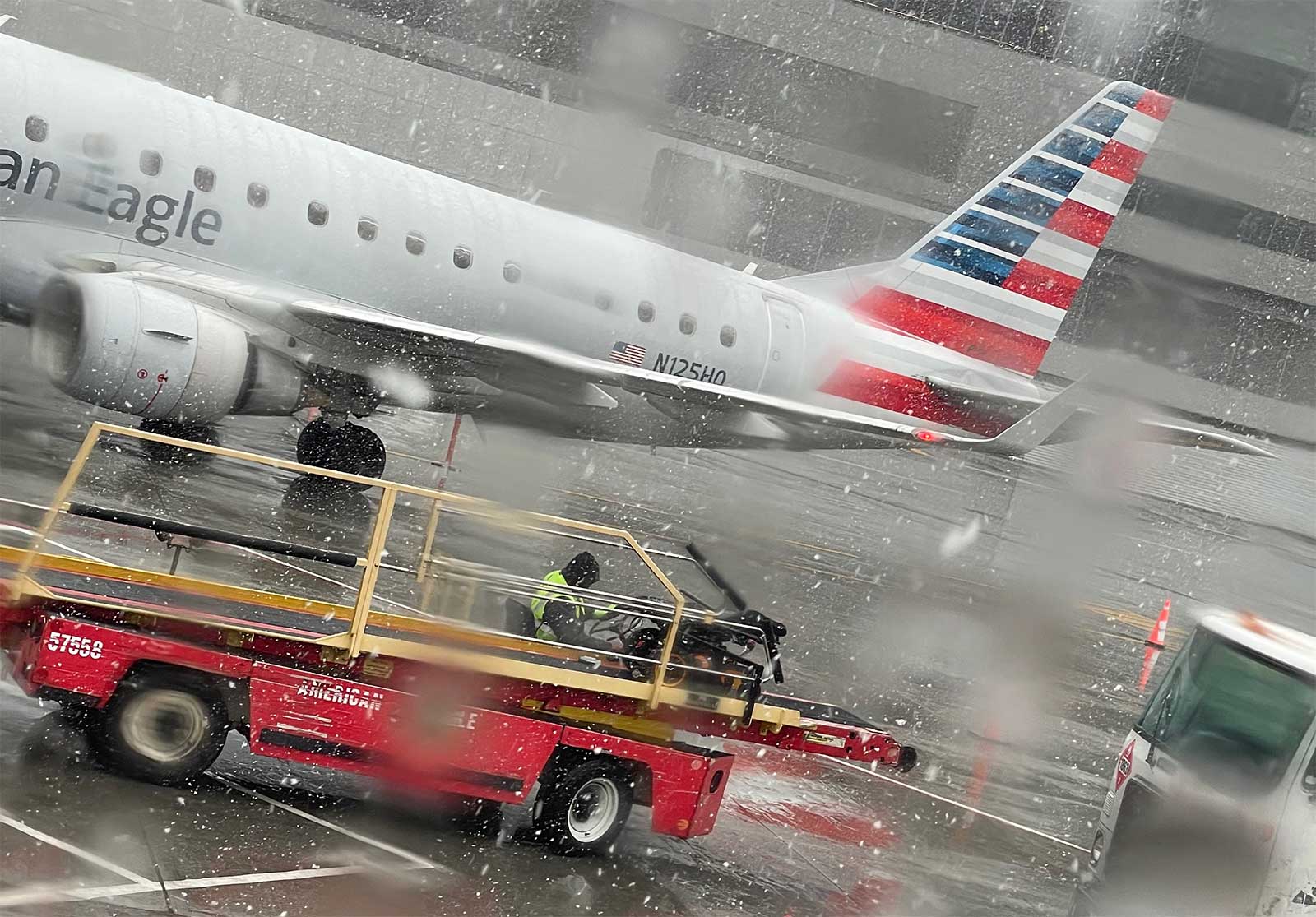
Airlines frequently leave wheelchairs exposed to the elements, and claim it’s the passenger’s responsibility to wrap them in plastic. That’s false — the responsibility to protect wheelchairs from damage lies squarely with the airline. The solution to protecting a wheelchair from the elements is simple — Amazon sells a waterproof tarp for $9 with free shipping through Amazon Prime. Purchasing one for use at each airport is hardly an undue burden for the airline!
Solving the Airline Wheelchair Damage Problem
Despite facing millions of dollars in airline damage claims each year, carriers have not yet been sufficiently incentivized to pursue lasting solutions. Since the USDOT began publishing statistics on airline wheelchair damage in 2020, the frequency of damage has remained steady. Here are five steps that could bring about a dramatic improvement in those figures:
- Air carriers should invest in the necessary equipment to permit the loading of wheelchairs in a manner that does not require ramp crews to physically lift the devices, and that protects them from adverse weather conditions.
- Wheelchairs should be stored and protected in unit load devices (containers) on all aircraft capable of accommodating them.
- Airlines must provide information on cargo door dimensions to passengers during the booking process, with additional follow-up via email.
- Airline staff responsible for the handling of mobility devices should receive annual recurrent training on proper loading and securement techniques provided by a trusted third-party.
- To incentivize action, the USDOT should set a deadline for compliance, after which time all carriers will be subject to the maximum allowable fine for each mishandled wheelchair — that’s nearly $30,000 per incident.
Accidents can, do, and will continue to happen, however the rate of wheelchair damage is so frequent that such events cannot be considered accidental. Wheelchair damage continues to occur at a high rate because airlines have failed to invest in the equipment and training necessary to safeguard mobility devices, and because we do not yet have a wheelchair space on airplanes.

